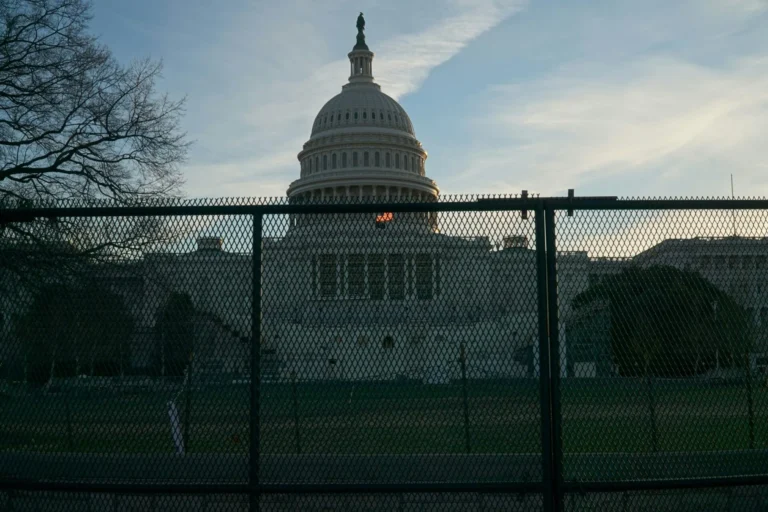Remember all thoserecent Americanbase closures? Younever heard thewhole story.
Did Base-closing Commission Hide Evidence to Get Its Way?By Cliff MontgomeryIn a report to the Base Realignment and Closure (BRAC) Commission last year, Department of Defense officials selectively withheld data showing that the need for certain DoD research laboratory facilities was likely to increase, not decrease, in coming years.The suppression of this information on “future excess capacity” seems to have significantly distorted the decision-making process regarding military base closures.”The [suppressed] data would have made for an awkward situation were it not expunged because it showed that excess capacity will vanish without any BRAC actions taken,” according to a sharply critical November 2005 memorandum prepared by Don J. DeYoung, a member of an internal BRAC study group.A copy of the DeYoung memo was obtained by the Federation of American Scientists, a non-profit watchdog group calling for greater freedom of information in government.”It was unethical to expunge critical data from the official process, and then withhold it from the public and the affected DoD workforces,” Mr. DeYoung wrote in his internal memorandum.There’s a possibility it was also illegal, given a statutory requirement to provide all relevant information to Congress and the BRAC Commission.Any decision to preserve or to shut down a particular facility is a judgment call which involves the consideration of numerous factors.But because relevant data were withheld, the resulting decisions “lacked integrity,” wrote Mr. DeYoung. “A necessary and appropriate public debate was thereby eliminated.”The BRAC decision-making process also produced some results that are questionable from the view of public policy. For example, a decision was made to close a research facility at Fort Monmouth in New Jersey, even though it is a leading developer of countermeasures against Improvised Explosive Devices (IEDs)–which are a major threat to U.S. troops in Iraq.Here are excerpts from a Defense Department synopsis of the problem:”Did Pentagon officials deliberately mislead the Base Realignment and Closure (BRAC) Commission, thereby deceiving the President, the U.S. Congress, the rest of the Department of Defense (DoD), and the American public about the fairness of the closure process and the validity of the proposals as they affected the Defense Department’s laboratories?”Fact: Tab (1) is the May 10, 2005 version of the final report of the Technical Joint Cross Service Group (TJCSG). Appendix A contains 267 pages of data that quantifies current and future excess capacity. This data was collected to validate the need for closures.”Fact: Tab (2) is the official report submitted to the BRAC Commission on May 20, 2005. But unlike the earlier version, Appendix A [now] contains only 13 pages. A total of 254 pages are missing. Current excess capacity data are shown, but data on future excess capacity are gone. […]”Fact: Tab (3) is a post-BRAC “lessons learned” analysis that was submitted to the TJCSG on November 29, 2005 by Don J. DeYoung, a Senior Research Fellow of the National Defense University. Mr. DeYoung was a member of the TJCSG. He was also a Navy analyst for the 1995 closure round and the DoD VISION 21 Technical Infrastructure Study from 1996 to 1997.”In his paper, ‘The Conduct and Lessons of BRAC-05’ (Tab 3), DeYoung makes the following statements:- ‘Data on future required capacity are the key to knowing if cuts in technical infrastructure support the DoD’s force structure plan…our final report did not contain any of the essential data on future capacity’. (p. 3, para. 2) […]- ‘A concern about security was the declared reason for expunging the data. On 16 May the TJCSG were notified via email that the DDR&E ‘has concerns that the aggregation of work years, test hours, and building information should be classified…[hence] the vast majority of appendix A is gone (all but 13 pages)”.- ‘Whatever classification was intended to protect, evidence does not point to it being national security–especially since, in the end, the data were never made classified…'”(p. 3, para. 5)This shows the principal problem America‘s current “classification” system; without a final, coherent and consistent classification process, those in charge may suppress any information they wish under the excuse that the material pertains to “national security,” even when it certainly does not.If the American people cannot discover what is being done in their name, how can they possibly have the power to run their own country? At such a point democracy is no longer a way of life; it is simply a farce.





